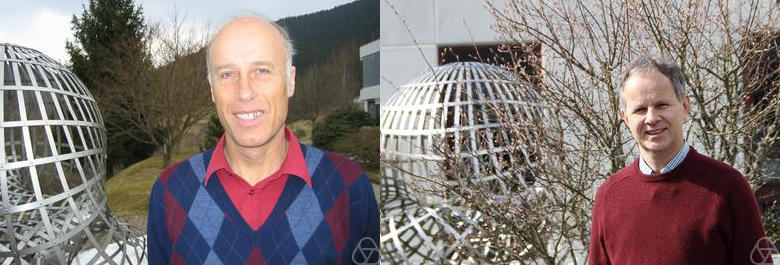HA-LU 2019: International conference in honor of Ernst Hairer and Christian Lubich
→
Europe/Rome
Gran Sasso Science Institute, L'Aquila
Gran Sasso Science Institute, L'Aquila
Viale F. Crispi, 7 67100 L'Aquila
Description

Ha-Lu 2019 - International conference in honor of prof. Ernst Hairer in the occasion of his 70th birthday and of prof. Christian Lubich in the occasion of his 60th birthday.
The conference is focused on presenting recent advances of the state-of-art for the numerical approximation of various problems, such as ordinary and partial differential equations, stochastic differential equations, geometric numerical integration and related topics.
Invited speakers:
- Assyr Abdulle (École polytechnique fédérale de Lausanne)
- Giorgios Akrivis (University of Ioannina)
- Uri Ascher (University of British Columbia)
- Lehel Banjai (Heriot Watt University, Edinburgh)
- Mari Paz Calvo (Universidad de Valladolid)
- Philippe Chartier (Inria Rennes)
- David Cohen (Umea Universitet)
- Peter Deuflhard (Zuse Institute Berlin)
- Erwan Faou (Inria Bretagne Atlantique & Irmar)
- Martin Gander (Université de Genève)
- Severiano Gonzalez Pinto (Universidad de La Laguna)
- Martin Hairer (Imperial College of London)
- Marlis Hochbruck (Karlsruhe Institute of Technology)
- Arieh Iserles (University of Cambridge)
- Tobias Jahnke (Karlsruher Institut für Technologie)
- Caroline Lasser (Technische Universitat München)
- Xue-Mei Li (Imperial College of London)
- Alexander Ostermann (Universitat Innsbruck)
- Michael Overton (Courant Institute of Mathematical Sciences, New York University)
- Cesar Palencia de Lara (Universidad de Valladolid)
- Alfio Quarteroni (Politecnico di Milano)
- Jesus Sanz Serna (Universidad Carlos III, Madrid)
- Bart Vandereycken (Université de Gèneve)
- Gilles Vilmart (Université de Gèneve)
- Gerhard Wanner (Université de Gèneve)
- Harry Yserentant (Technische Universitat München)
- Marino Zennaro (Università di Trieste)
Scientific and organizing committee:
- Raffaele D'Ambrosio (University of L'Aquila)
- Nicola Guglielmi (Gran Sasso Science Institute)
- Maria Lopez Fernandez (Sapienza University of Rome)
- Pierangelo Marcati (University of L'Aquila, Gran Sasso Science Institute)
Participants
Antonio Cicone
Ashraf Owis
Burcu Aydogan
Christian Lubich
Chunmei Su
Dang Thien Thu Nguyen
David Cohen
Ernst Hairer
Fasma Diele
Francesca Pitolli
Giulio Del Corso
Giuseppe Izzo
Harry Yserentant
Jan Leibold
Jean Daniel Mukam
Luca Alasio
Majid Zamani
Maria Lopez Fernandez
Mrumun Comfort Soomiyol
Mufutau Rufai
Nicola Guglielmi
Pierangelo Marcati
Raffaele D'Ambrosio
RAM JIWARI
Ramesh Kumar Devaraj
SAPNA PANDIT
Severiano González Pinto
Sunday Fadugba
